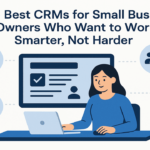Do you wish to learn about the segmentation strategy in marketing? Not sure how you can use it to your benefit? Well look no further, this article will give you an insight into the world of market segmentation. You shall learn all about what is segmentation in marketing and its different types.
Everyone wants to develop a perfect marketing strategy, a strategy that resonates with the message they want to send to their potential customers. While assembling a successful game plan may take some time, there are some strategies that you can make use of to make it easier for you to market your product and services.
Communication is an art and they key to success when it comes to formulating a successful marketing strategy. Sometimes your message can be lost, confused or at times avoided altogether once the size of your audience starts to increase. The larger the audience, the more the variation in their needs, preferences and opinions. This can put your marketing strategy at the risk of becoming relevant.
This is exactly why it is crucial to segment your target audience. This practice allows you to focus your efforts on individual customer segments allowing you to cater their specific demands and needs. It also gives your brand an advantage over your competitors because you are able to prove to your customers that you care about what they want and know what works best for you.
In this article, you will not only learn about what is segmentation in marketing, but also learn to correctly and efficiently direct your marketing efforts to the right audience to ensure the success of your business in the long term. Before we dig deeper into this strategy, we will define market segmentation and walk you through its various benefits. So read along and find out how to make your business a success by following a few tips and techniques.
What is market segmentation?
Market segmentation refers to a business practice that companies use to divide their target market into smaller and more manageable groups based on their commonalities. Thus allows them to optimize their sales, advertising and marketing efforts. In simple words, customers within each segment have similar characteristics that companies can use to their advantage to advance their marketing efforts.
The purpose of this strategy is to introduce customized messages for each segment depending on their needs and preferences. This also ensures that the potential customers are receiving the messages successfully. This is especially advantageous for companies that may have products or services that can be of benefit to different types of customers.
It is important for your marketing team to understand that you cannot be everything and everywhere at the same time. You can’t solve everyone’s problems or appeal to everyone by sending the same message.
For example, if your company sells an ointment that helps lessen muscular pain, you will have to divide your audience into the following three categories: young, old and women. Youngsters often find themselves with muscular pain after playing or going to the gym, so your advertisement will be tailored according to that. In case of women, you can tell how the ointment helps with muscular pains after menopause. And lastly, for the older generation, you can talk about how it helps ease the muscular pain associated with different ailments that you can develop with old age.
Once your message starts appealing to different segments of the society according to their requirements, your business is bound to flourish.
You can segment your target audience based on age, personality traits, interests, behavior, needs, income and location. This shall allow you to create strategies for different types of consumers, depending on how they perceive the overall value of certain products and services.
Now that you know what is segmentation is marketing, let’s talk about its different types to find out which will work best for you and your company.
Types of market segmentation
There are various approaches you can take when trying to segment a market. It all depends on who you are aiming to target. If you are not too sure about who your target audience should be, you can always analyze the market strategy of your competitors. This will give you a better idea of what needs to be done.
This article will walk you through the four main types used in real-life market segmentation along with examples to further strengthen your understanding of the topic. Let’s move forward and discuss the four types.
Geographic segmentation
Geographic segmentation, as the name pimples targets customers based on a predefined geographical border. It is important to note that the difference in values, interests, preferences vary dramatically across cities, states and countries. It is important for the company to recognize these differences and market their services or products accordingly.
Through this kind of segmentation, you can determine where your message will be well-perceived and where you can expand your business in the future.
For example, you as a company produce winter products ranging from coats, windproof jackets and sleeping bags to water proof pants and shoes. You will carry out geographic segmentation to determine the requirements of the population across different states within the country. You will figure out when the winter season starts in a specific region or whether the area is cold all year round. You will determine which areas should be on top of the priority list at what time of the year.
In this way, you will save a lot of time and money and will shift your focus to the population that currently requires your products. It increases the overall efficiency of your marketing strategy.
Demographic segmentation
Through demographic segmentation, you can divide the market using variables such as gender, age, family size, education, ethnicity, occupation and income. This form of segmentation is used when you are marketing a product that clearly caters to the individual needs and relates to at least one or more of the demographic elements.
Usually the most obvious and significant variable of them all is age. It is a crucial element for marketers. They must understand how the preferences of age groups continue to change at various stages in life. Even media consumption varies greatly according to age. Most youngsters prefer using Instagram while boomers are Facebook fans. Thus, you need to know where to market your product. The same is true for TV channels. News channels are often only watched by elders while Movie channels are favorite for the young. While these differences may seem trivial, they can make or break your marketing strategy.
This is the most commonly used form of market segmentation as it also allows business to know how customers use your products or similar products in the market and how much are they willing to spend.
For example, Saga holidays sells travel packages exclusively to those above the age of 50 and their marketing reflects that.
Psychographic segmentation
Unlike the other two types of segments we have discussed previously, psychographic segmentation is focused on the intrinsic traits of the target audience. In other words, this grouping is based on the people’s personalities, values, attitudes, interests including their subconscious and conscious motivators. Lifestyles and opinions are also taken into account in case of psychographic segmentation.
Since it is not easy to understand your target audience to such a personal level, companies focus on methods such as surveys, interviews, case studies and audience testing. Through the data or information gathered, the businesses come to conclusion as to how and where they should market their product and services.
Someone living in a small beach town will have a different lifestyle from someone living in a big city working in a multi corporation. In the same way, their preferences shall differ as well and marketers must acknowledge these differences in order to become successful.
Similarly, an individual’s attitude is molded according to his or her cultural background or how they were raised. Each prospective customer will have a varying attitude which can be used as a variable for psychographic segmentation.
A marketer has to keep these points in mind while deciding the target market for an upcoming product feature or a new product.
Behavioral segmentation
The last type of segmentation is behavioral segmentation which focuses on specific reactions. This includes consumer behavior patterns and the way customers go through the purchasing and decision making process.
Marketers must find out about the people’s attitude towards your brand, how they interact with it and how they use it. Collection of this type of data is similar to the data collected for psychographic segmentation. Sometimes people end up using the two types interchangeably which is incorrect. In behavioral segmentation, you focus on the customers’ behavior towards your brand and in case of psychographic, the general attitude and behavior of a person is taken into account.
An excellent example of behavioral segmentation is brand loyalty. Everyone has that specific brand they trust and always purchase from and once they launch a new product, you will want to buy it without worrying about the reviews.
This type of loyalty to the brand produces a consistent buying pattern which is then known as a behavioral trait. Marketers have the duty to ensure that they are able to get customers to love and stay loyal to your branch for a consistent purchase cycle.
Sometimes companies will offer rewards to ensure that the customer stays loyal to them. An example of this can be a membership card that gives you a certain discount after every purchase you make. Another example is of Sephora, the more you buy the more points you get which can be redeemed to get generous samples or other free services.
Benefits of market segmentation
In this part of the article, we will focus on various benefits of market segmentation to help you understand why this marketing strategy is important and necessary in the present day and time. Read along to learn what your business is likely to gain through market segmentation.
You get to focus on customers that matter
After you have segmented the market, rather than being all things to all people, you can start focusing on the customers that matter the most. You are able to save a lot of time and money by targeting potential customers and not the whole population. Once you gain some clarity about who you need to focus on, you can further assess the needs and requirements of the shortlisted customers in order to better cater to their demands.
Moreover, a smaller pool of people is much easier to handle and please in comparison to a large population. This also brings clarity to your business as to what products you should produce in the future and ways in which you can further personalize them to show to the customer that their opinion and needs matter.
Improved campaign performance
Through market segmentation, you can improve the performance of your marketing campaign as it helps you target the right people using the right message and at the right time. Segmentation allows you to engage with your audience in a more personalized manner. This is because you start tailoring your brand’s message according to their preferences and needs.
If you start targeting a broad audience, you will have to spend a lot of time and resources on your campaign. Even then your message is likely to get lost or not be heard by potential customers. The aim here is to turn people into potential customers and no offense, but not everyone wants your products. Hence your ad campaign can start focusing on people who will turn into long term customers.
Even if the products you’re selling have a broad customer appeal like clothes, it is best to carry out customer segmentation so you can tailor your ad according to different groups ranging from kids and adults to teenagers. This is because while each of 3 groups would want to buy clothes, their preferences vary greatly. Hence, you need to make advertisements that appeal and attract each of them individually. Your ad campaign for male sweaters will not attract a teenage girl.
Reveals areas to expand
Market segmentation can also help businesses identify areas where there is a cluster of potential customers and where their products and services are in demand. Thus, with necessary information available to you, your company would be able to expand into new markets without worrying about failing to attract customers or going into loss.
Through market segmentation, you can also find out whether opening a website to sell your product online is a good idea or not. Using behavioral data, you can find out whether people prefer your product or a similar product in physical stores or through an online store.
Increases competitiveness
Once you are able to locate your target audience, your competitiveness in the market increases. Other companies now know that you are here to stay. Naturally, a competition emerges between companies who are selling similar products and services. Since you are bound to compete with them, you ensure that your product is up to the mark at all times, in fact you might think of further improving your product.
Furthermore, this competition will also ensure that your marketing team comes up with better and more innovative ideas to market your product in an improved manner and develop ad campaigns that help your product stand out. You can then start working on potential member discounts and coupons to secure loyal customers.
A healthy competition is always important to ensure that your product is up to the standards of your market and it keeps your company running in an efficient manner. Hence, never shy away from market competition and find ways in which you can use it to your benefit.
Higher customer satisfaction
The main objective of your business is to satisfy your customer and without market segmentation, there is a high chance that rather than gaining customers, you will be losing them. This is because it’s highly unlikely that there aren’t other companies in the market that are manufacturing products similar to yours. These companies through market segmentation continue to personalize their message and product to cater the needs of their customer. Hence, naturally the customer would want to buy from a company that makes them feel seen and heard.
Doesn’t matter if the quality of your product is better, people will trust companies that listen to and meet the demands of their customers. Therefore, without market segmentation, you are at a disadvantage since you will fail to satisfy customers that matter. The ultimate goal of your company as mentioned above is customer satisfaction and the way to achieve that is through market segmentation.
Some other benefits of market segmentation include:
- More efficient use of resources
- A more customer centric culture
- A superior experience for customers
- Increased profitability
- Assists in distribution strategies
How to get started with segmentation
There are five primary steps that you need to follow when segmenting the market
1. Define your market
Ask yourself, is there a need for your products and services? Is it a small or a large market? And most importantly, where does your branch sit in the current marketplace?
2. Segment your market
Decide out of the different types of segmentation mentioned in this article, which one caters to your needs the best. Try to figure out which type of segmentation you want to focus on. You don’t have to stick to one in case it isn’t working out for you. A lot of brands choose to use a combination of different types of segmentation
3. Understand your market
You can study and understand your market by carrying out surveys, polls, focus groups and preliminary research. Ask questions relating to the segments you have chosen. Make sure you are using a combination of quantitative and qualitative questions.
4. Establish your customer segments
Next, analyze the responses you received to find out which customer segment is most relevant to your brand.
5. Test your marketing strategy
After analyzing the responses, test your findings on your target market through conversion tracking to learn how effective your approach is. The key here is to keep on testing. If the uptake is not up to the mark, reevaluate your segmentation and research methods.
Common mistakes in market segmentation
Now that you know what needs to be done. Here are a few common mistakes that you should avoid:
1. Avoid making your segments too small or specialized
Segments that are too small may not be quantifiable or accurate and they can be distracting and misleading rather than insightful. Your segment should be big enough to help you understand the market trends.
2. Focus on the purchasing power
Once you have developed a segment, it is important that you analyze the buying power of the people that make up that segment. You need to make sure that people are capable of buying your products and just just this once but also in the long term. Your investment in them should result in a
profit.
3. Don’t be inflexible
Customers change, demands change and so do circumstances. Hence, don’t hold onto your segments too tight for too long. Allow them to evolve, use a different segmentation method. Always be ready to incorporate change in your market policy when necessary. The world keeps on evolving, your business has to learn how to keep up with it.
Conclusion
The world of marketing continues to evolve and in order for your business to be successful, it is essential that you try to make use of the emerging marketing tools. While it may not seem like an easy task to continuously update how you market your products and services, it is a necessity and not an option. It may take some time for you and your business to adjust to these changes but with time, as the benefits start to show up, you will be content with the changes you chose to make.












